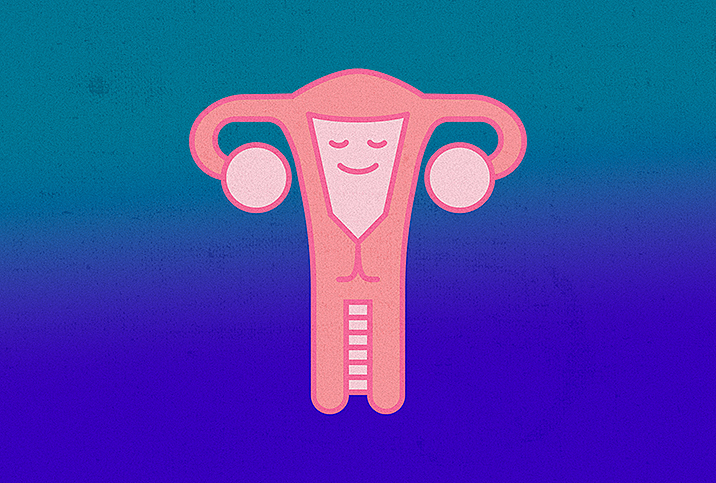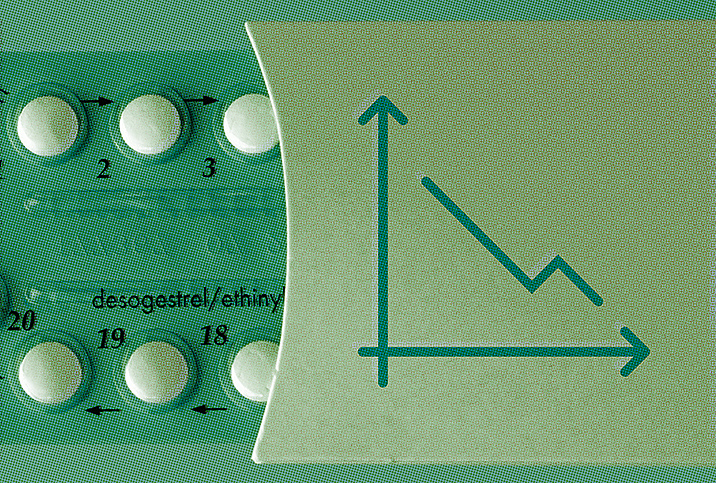Study Suggests Genetic Link Between Ovarian Cancer and Endometriosis

Each year, about 19,880 women receive a diagnosis of ovarian cancer and 12,810 women die of the disease. Ovarian cancer accounts for more deaths than any other cancer of the female reproductive tract.
A 2022 study published in the journal Cell Reports Medicine suggested a genetic link between certain subtypes of ovarian cancer and endometriosis, which could help identify more women at risk for developing ovarian cancer. Endometriosis is a painful condition where tissue similar to the endometrium, or lining of the uterus, starts to grow in other areas of the body, such as the ovaries, fallopian tubes or pelvis.
While endometriosis itself is not cancerous, the condition behaves similarly to cancer in regard to tissue invasion and proliferation. Studies indicate that women who have endometriosis are slightly more at risk for developing epithelial ovarian cancer (EOC), the most common type of ovarian cancer, in which the cancer starts on the surface of the ovary.
Study findings
The 2022 study examined the major histological subtypes of EOC. Researchers compared the genomes of 15,000 women with endometriosis and 25,000 with ovarian cancer to find an overlap of risk factors between the two diseases. The study stated two subtypes in particular, endometrioid (ENOC) and clear cell (CCOC), are most strongly associated with endometriosis.
Still, the risk of developing ovarian cancer, with or without endometriosis, is relatively low.
"Women, in general, have a 1.3 percent chance of developing ovarian cancer; having endometriosis increases this slightly to 1.8 percent," explained Sally Mortlock, Ph.D., a research fellow at the Institute for Molecular Bioscience in Brisbane, Australia, and lead author of the study.
The study noted that when elements controlling the expression of the genes are disturbed, it increases the risk of endometriosis and/or epithelial ovarian cancer. Furthermore, different genes and gene pathways may contribute to the causal relationship between endometriosis and the different subtypes.
Comparing other research
Other research has suggested similar findings to the Cell Reports Medicine study.
"We know that 80 to 90 percent of endometrioid and 50 to 74 percent of clear cell ovarian cancers originate in the endometriosis background morphologically and they share common mutations," said Ayse Ayhan, M.D., Ph.D., consultant pathologist at Seirei Mikatahara Hospital, lecturer on gynecologic and breast pathology for Hamamatsu and Hiroshima University School of Medicine in Japan and member of the Endometriosis Foundation of America Scientific Advisory Board.
Ayhan, a co-author of the 2017 study "Cancer-Associated Mutations in Endometriosis Without Cancer," said her research found cancer-associated gene mutations contained within endometriosis lesions. However, the rate of these mutations turning into malignant cancer was only 1 percent. Furthermore, not all lesions were found to have these gene mutations, suggesting these gene mutations alone may not be enough to turn into malignant lesions.
Looking ahead
More research needs to be done to examine the relationship between ovarian cancer and endometriosis. Current studies are investigating the role genes play in the link between these two diseases.
"Work is ongoing to better characterize endometriosis lesions," Mortlock said. "This could be used to test genetic associations between potential endometriosis subtypes and risk of certain EOC histotypes."
Additional research is also needed on the origins of endometriosis lesions and their similarities to cancer cells.
"Endometriosis itself is not well known in terms of etiology and pathogenesis. If we can deal properly with endometriosis and treat it in time, endometriosis-related ovarian cancers will disappear," Ayhan said.
In the meantime, women with endometriosis can rest assured that their risk for developing ovarian cancer is still relatively low. Knowing the role genes play in the development of ovarian cancer can help better screen women with endometriosis who may have a slightly higher risk for developing this type of cancer.


















